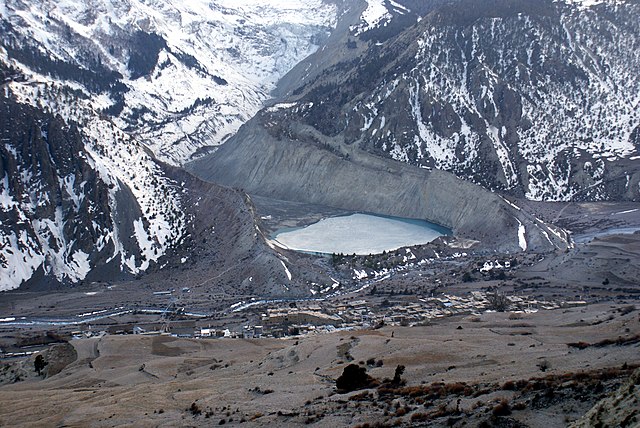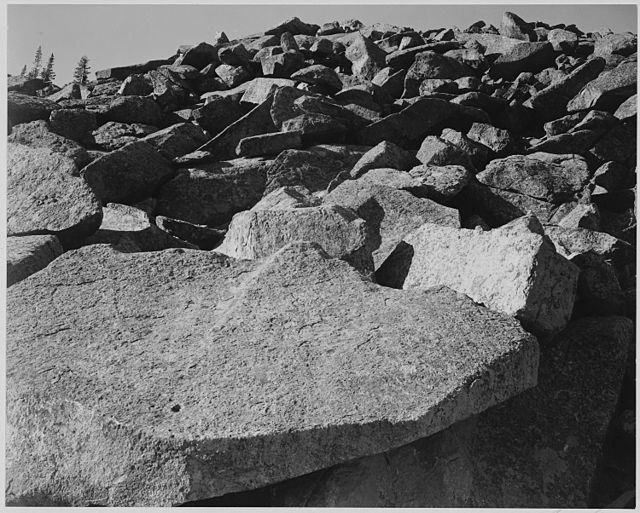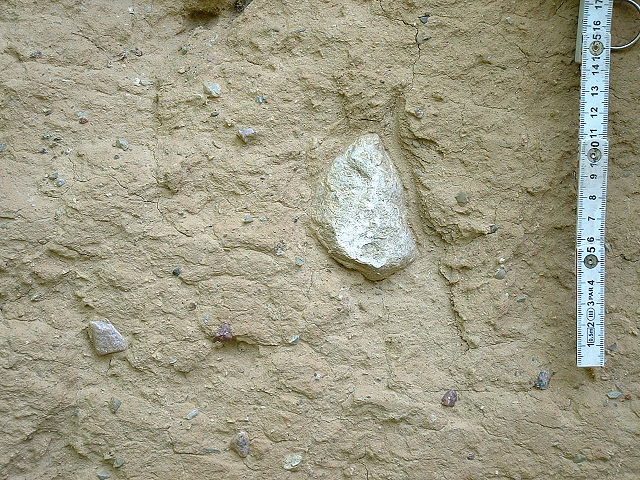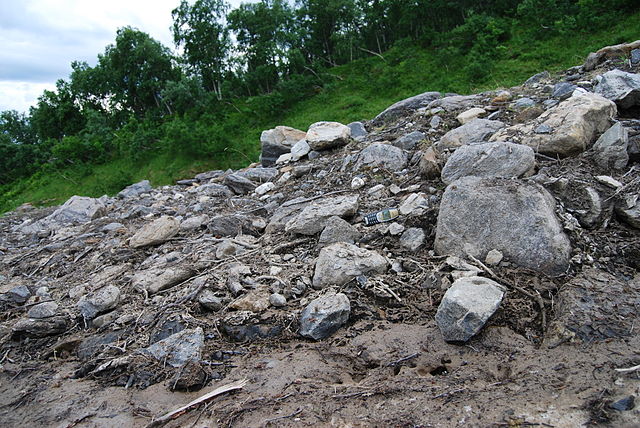A moraine is any accumulation of unconsolidated debris, sometimes referred to as glacial till, that occurs in both currently and formerly glaciated regions, and that has been previously carried along by a glacier or ice sheet. It may consist of partly rounded particles ranging in size from boulders down to gravel and sand, in a groundmass of finely-divided clayey material sometimes called glacial flour. Lateral moraines are those formed at the side of the ice flow, and terminal moraines were formed at the foot, marking the maximum advance of the glacier. Other types of moraine include ground moraines and medial moraines.
The snow-free debris hills around the lagoon are lateral and terminal moraines of a valley glacier in Manang, Nepal.
Moraine in Rocky Mountain National Park, taken by Ansel Adams in 1941.
Moraines around the Icy lake (2709 m), just below Musala peak (2925 m) in Rila Mountain, Bulgaria.
Lateral moraines of a retreating glacier in Engadin.
Till or glacial till is unsorted glacial sediment.
Closeup of glacial till. Note that the larger grains (pebbles and gravel) in the till are completely surrounded by the matrix of finer material (silt and sand), and this characteristic, known as matrix support, is diagnostic of till.
Glacial till with tufts of grass
Till after avalanche, Norway







